11 Tips for Walking Dogs During the Winter
Let's face it, winter walks with your dog are generally way less appealing than spring and summer ones. Winter weather means muddy paws, dirty bellies and a laundry mountain to deal with after each and every outing. Country dogs with fluffy, thicker coats also have to contend with getting burrs and bits of twig caught in their coats, which their patient owners have to spend ages picking out once back at home.
When the colder weather arrives, the motivation to walk your furry friend is often not easy. The challenges of keeping both yourself and your dog safe and comfortable on winter dog walks are different to those you face in the summer. You can stand down from the summer challenge of wondering whether it's too hot to walk your dog, but you may be asking yourself the following questions:
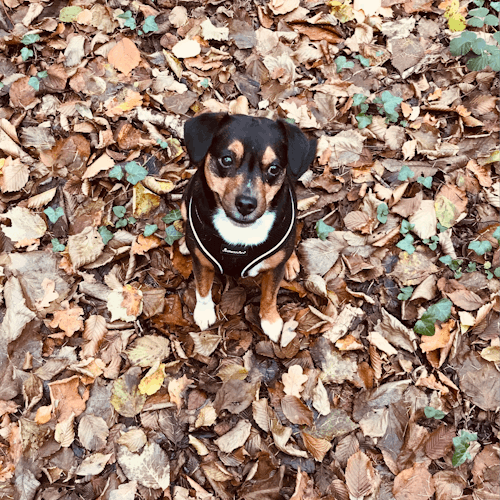
Do dogs need as much exercise during the winter?
The answer is yes!
The rain may sometimes be horizontal and the wind chill may, on occasion, take your breath away, but your dog still needs the physical and mental stimulation of regular walks throughout the winter. As with humans, physical activity such as daily walks burns energy and helps to beat the winter blues and avoid weight gain.
What do I need to be aware of to walk my dog in cold weather?
To help both you and your dog to enjoy regular wintery walks, we’ve put together some walking tips for cold weather conditions to help keep you both safe, comfortable and healthy.
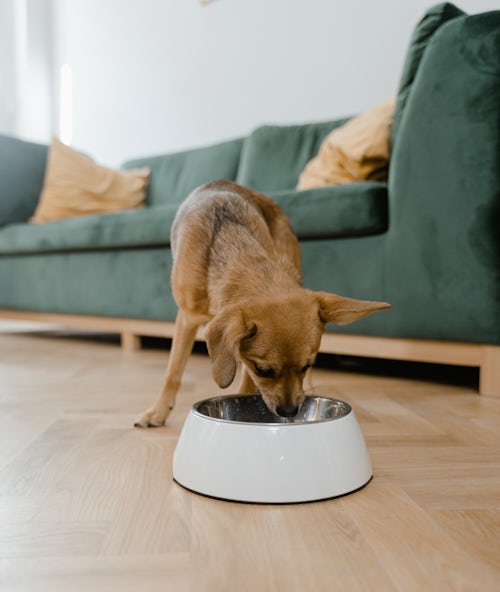
Should I adjust my dog's food intake in winter?
It takes more energy to keep warm when it’s cold, so we burn additional calories in winter. If you’re planning to regularly walk your dog in freezing weather, adjust their food intake (and maybe yours too) to help keep energy levels up.
Alternatively, if despite your best efforts, your dog is being exercised a lot less over the winter, make sure you reduce their food a little bit to prevent them from putting on weight. This should not be a daily seesaw but a seasonal addition or reduction in amount, as it is important to be as consistent as possible with your dog's diet. It is fine to give them a few extra healthy treats if they have just walked 10 miles with you in a blizzard, but a cup full of food one day, followed by a bucket of food the next is not ideal.
Preparing for Your Winter Dog Walk

Tip 1 - Plan your walk
Time of day: We know that work and life commitments sometimes require us to walk our dogs early in the morning or late in the evening, but if you can, try to walk your dog in the middle of the day, as this is usually the brightest and warmest time of the day too. This is not only more enjoyable because it's relatively warm, but you can also see where you are going. Like humans, dogs can suffer from SAD (seasonal affective disorder) and taking your walks during daylight hours maximises your chances of alleviating any doggy gloom that could result from those shorter days and colder temperatures.
Weather: Check the weather forecast before you head out to help plan a suitable route. Some days the bad weather conditions will be wall-to-wall, but if you can spot a break in the weather on a reliable forecast, grab that lead and get your daily walk ticked off while the weather gods are on their tea break.
Alternative walking routes: If it's snowing or freezing you might want to shorten your walk. A shorter walk is still better than no walk at all.
Alternative exercises: There may be a few days in the year when the weather is so bad that you think the potential dangers of going out outweigh the benefits of even a shorter walk. On days like this, you can give your dog the mental and physical stimulation he needs by doing alternative forms of exercise, such as indoor training sessions and playing indoor games. Indoor activity for your dog could include a game of fetch in a hallway or larger room or hiding treats around the house and encouraging them to spend a bit of time sniffing them out.
Tip 2 - Ensure your dog is warm and comfortable
When you go for a walk on colder days, have your winter essentials ready with you.
Winter dog walking essentials could include:
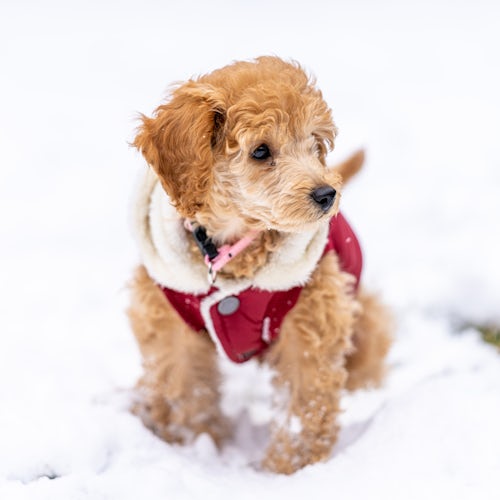
Winter dog coat
Really cold winter temperatures could dangerously lower your dog's body temperature. Whilst the majority of breeds will be fine on all but the very coldest winter days, dogs with underlying health conditions, certain short-haired dog breeds and many puppies will struggle in the cold more than others and may benefit from wearing a nice warm coat for their walks in cold temperatures.

Paw Balm & Wax for Dogs
Before setting off for a walk on snow days or in icy conditions, rub some paw balm on your dog's paws. This will minimise dry skin caused by freshly salted or de-iced roads or pavements, as well as stopping snow from sticking to their hair and causing it to clump uncomfortably. They will definitely be grateful for this winter paw care and it will make their active winter a far more enjoyable one. You can buy specialist dog paw balm online or you could use coconut oil, which is effective and won't do your dog any harm if they lick it after application.
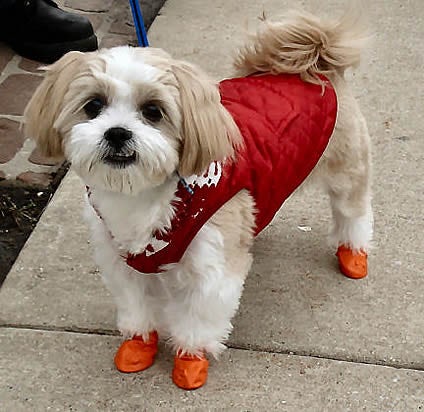
Winter Booties for Dogs
If the ground is icy or gritted, you could add winter booties to your walk-wear essentials. These may make your dog do a comedy walk when he first tries them out, but they will keep his feet warm and dry and prevent packed snow from gathering between his pads and making him miserable on a truly wintery walk.
During Your Winter Dog Walks

Tip 3 - Pet Safety Tips For Walking in Snow
Beautiful, snow-covered trails make great Instagram snaps but they also conceal a range of hazards that you would normally be on the lookout for on a dog walk. Sharp objects, tree branches and rocks are among the potential dangers that can be concealed under a picturesque layer of snow and could cause injury to you or your dog. The best way to mitigate this risk is to take extra care and use footpaths or trails that you are used to walking in good weather too. You will be aware of most of the hazards on familiar routes and will know how to avoid them, even if they are covered in snow. We hope these tips for keeping both humans and canines safe and comfortable will help you to get more enjoyment out of getting out and about with your dogs in winter. Ultimately, if you can give yourself a good talking to and muster the motivation to get out of the house with your canine companions, even in bad weather, you will both feel better for it afterwards.

Tip 4 - Avoid frozen areas of water
Tempting though it may be to watch your dog skitter across a frozen pond or lake in the manner of Goofy in a Disney cartoon, you should definitely not allow them to do this. The risk that they may fall through the ice and get stuck is not worth the comedy value. Even if you manage to avoid serious injury to your dog in the initial accident and to yourself in the ensuing rescue attempt, the drenching in icy water could dangerously lower your dog's body temperature.
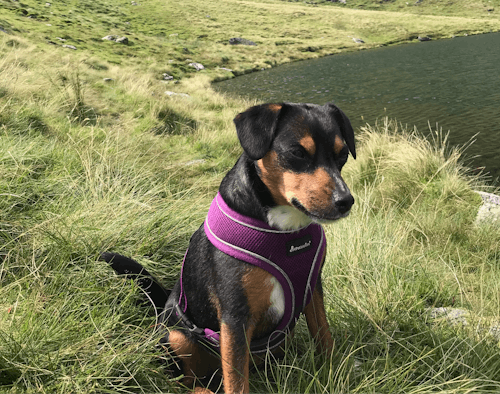
Tip 5 - Notice changes in your dog's behaviour
Notice changes in your dog's behaviour during your walk. If they're showing signs that they're unhappy, such as favouring a sore paw, whining or shivering, then consider cutting the walk short.

Tip 6 - Walking in the dark?
If you're walking in the dark, it's important to make sure you and your dog are visible to other dog walkers and to any drivers you may encounter. If you’re thinking of getting a winter coat for your dog, consider getting one with high-visibility and reflective features, or a light-up collar or flashing light attachment for their existing collar. Light-up dog collars, LED flashers and hi-vis/reflective dog coats are widely available online and at most pet stores. Consider getting hi-vis or reflective clothing for yourself too.
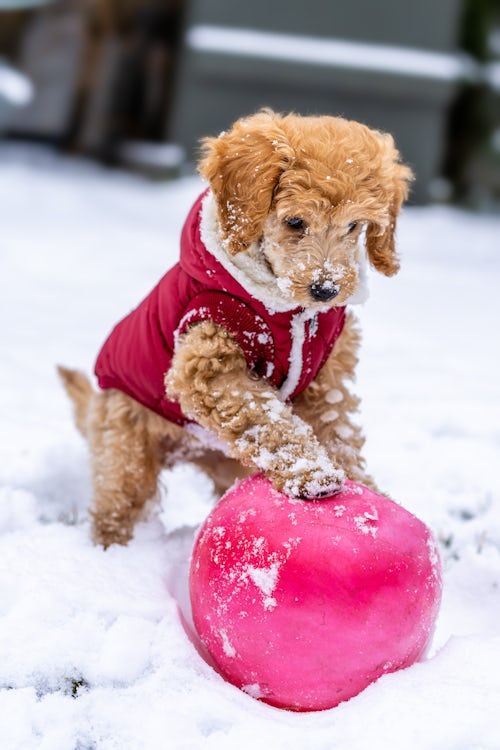
Tip 7 - Avoid areas that may have been treated with grit or chemical de-icers.
Some antifreeze chemicals are dangerous for dogs. They can cause chemical burns externally and also do damage internally if ingested. If you like to de-ice your paths and paved areas at home when the snow and ice descends, remember to use a pet-safe ice melter (you can buy this online or find a recipe to make your own).
Post-Walk Checks and Essential Car
Here are 4 things you can do as soon as your walk is over and you’re indoors or in the car:
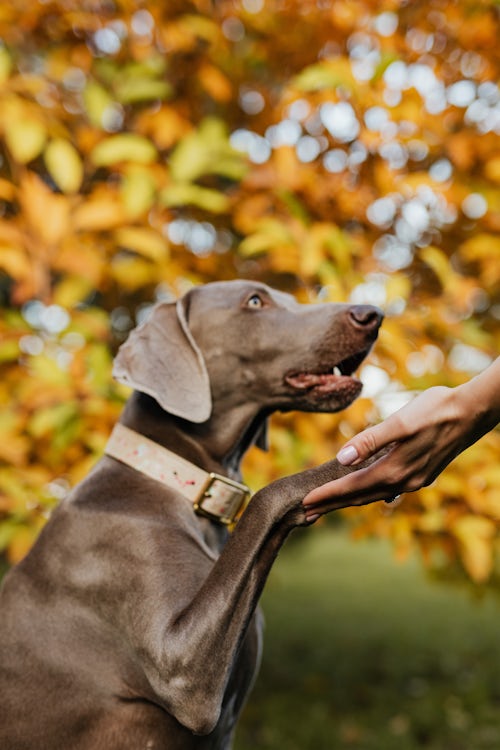
Tip 8 - Check your dog's paws
If you have ever got wet feet or soggy trouser legs on a walk, you will know how uncomfortable they can be. Your dog feels similar discomfort in his paws if the long hair between his toes accumulates grit or ice. Keep the hair between your dog's pads trimmed short to stop ice or grit from gathering there and causing temporary lameness by making it painful for your dog when they walk. Remember to check around your dog’s pads and claws and remove any snow, grit, pine needles and burrs at the end of every walk.
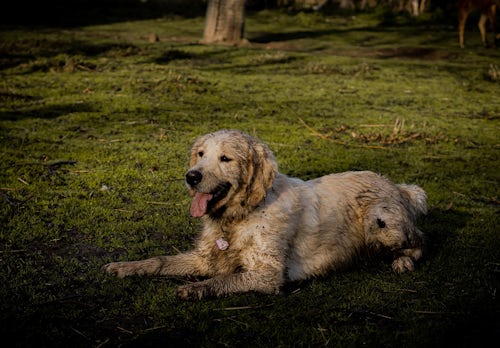
Tip 9 - Do a thorough clean-up operation
Rinsing off any mud from your dog's fur and belly as soon as you get back will not only stop them from decorating the interior of your car and/or the inside of your house with fetching brown paw prints and muddy tail marks. Cleaning them up as soon as the walk is over will also help to prevent skin irritations and conditions such as Alabama Rot, a deadly fungal condition that seems to be more prevalent in muddy conditions.
Learn more about Alabama Rot here
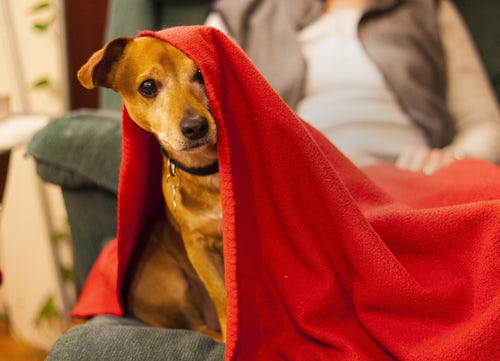
Tip 10 - Keep a towel handy
Once you have rinsed the mud off your dog, make sure you towel-dry them thoroughly. This will ensure that they don't catch a chill from the wet fur or develop any of the skin conditions or infections that can be caused by a damp coat.

Tip 11 - Invest in a drying coat
Get your dog to wear a drying coat to keep your dog warm and stop any residual damp getting into the home and damaging carpets or furnishings. Drying coats are particularly handy for dogs with long and thick coats which take a while to fully dry, even after you have thoroughly towelled them off. The best dog drying coats are super absorbent and help to remove mud, sand and grime as well as residual water.
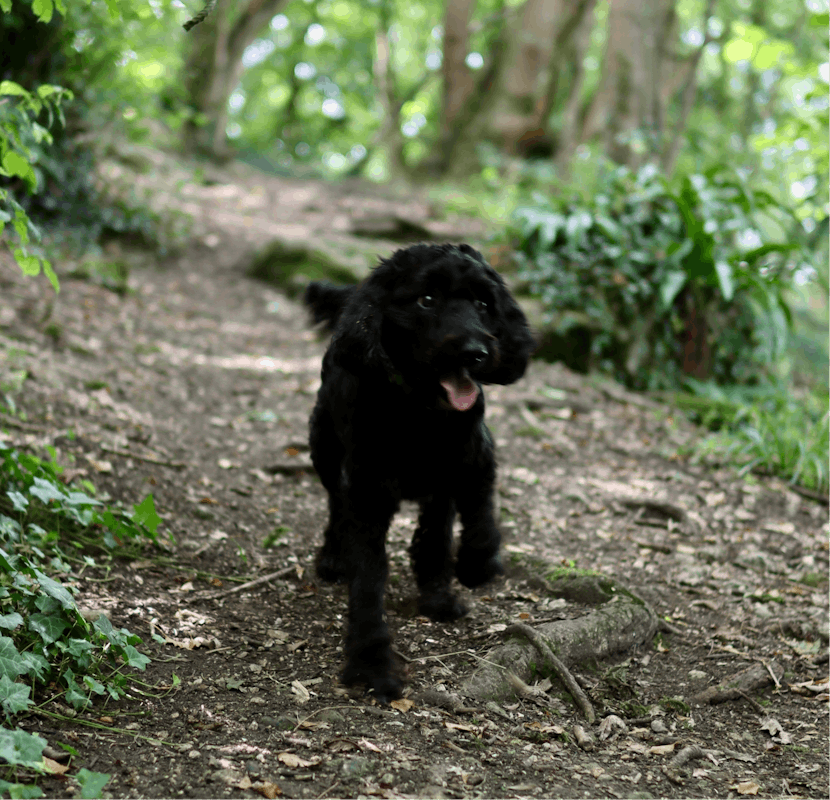
.png?ixlib=gatsbyFP&auto=compress%2Cformat&fit=max&w=70&h=70)